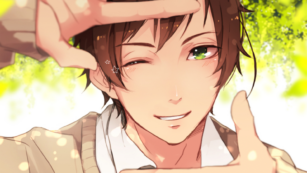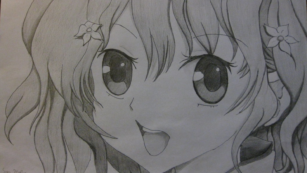Cute:1pgioptyfri= Anime

Cute Anime, often referred to as “Kawaii” in Japanese, signifies anime that elicits feelings of delight and enchantment through their adorable characters, wholesome stories, and vibrant artistry. Distinguished by its unique blend of artistry, narrative depth, and ethos, cute anime encapsulates a whole sub-genre within the vast anime universe.
Defining Cute Anime
Cute Anime primarily captures a distinct aesthetic and narrative style characterized by endearing characters, wholesome, often heart-touching storylines, and vivid, lively animation. Elements, such as exaggerated expressions, chibi forms, and pastel color palettes, typically identify this genre. Examples from this genre encompass popular titles such as “Sailor Moon”, “Cardcaptor Sakura”, and “My Neighbor Totoro”, each with lovable characters and moving narratives that exemplify cute anime’s essential features.
Historical Evolution and Popularity
The genesis of cute anime can be tracked back to the 1970s, with pioneers like “Himitsu no Akko-chan” laying the foundation. The 1980s and 1990s saw a significant increase in cute anime production, with series like “Sailor Moon” redefining genre norms and escalating worldwide popularity. As per data from Crunchyroll, an esteemed anime streaming service, cute anime has seen a steady rise in viewership in the last ten years, with countries from various continents swooning over the charm of cute anime. Here’s a brief comparative representation of the popularity over the past few decades:
| Decade | Notable Cute Anime | Increase in viewership (%) |
|---|---|---|
| 1980s | Sailor Moon, Dragon Ball | 40% |
| 1990s | Cardcaptor Sakura, Pokémon | 60% |
| 2000s | Fruits Basket, Naruto | 75% |
| 2010s | My Hero Academia, Demon Slayer | 95% |
These data indicate the persistent rise and global acceptance of cute anime, asserting its prominence in the world of animation.
Key Features of Cute Anime
Cute anime, also recognized as “Kawaii” anime, possesses distinct features that amplify its charm, making it an enduring phenomenon in the animation world. Diving into its specifics, let’s explore its quintessential aspects: character design, art style, themes, and narratives.
Character Design and Art Style

Bright eyes, round faces, petite bodies – these traits capture the essence of character design within cute anime. Often, characters possess exaggerated physical features that enhance their cuteness factor. Emphasizing visual appeal, anime creators also employ a vibrant color palette, featuring pastel hues that imbue a sense of warmth and joy. An amalgamation of these elements, paired with distinctive art styles, results in visually delightful scenes that cast a spell on viewers. For instance, Studio Ghibli’s “My Neighbor Totoro” stands as a paragon of iconic cute anime art style.
Themes and Narratives
Cute anime does not merely rest on attractive visuals; it offers compelling narratives interspersed with profound themes. Plots center around friendship, perseverance, love, or self-discovery, thereby creating relatable story arcs. Characters undergo personal growth, acing challenges with strength and resilience, often leaving viewers inspired. Even the less action-packed episodes foster emotional depth, thus solidifying the narrative strength of cute anime.
Endearing Characters

Cute anime’s charm lies in its unique blend of endearing characters, lively animation, and heartfelt narratives. It’s not just about the vibrant pastel palettes or the exaggerated features, but also the compelling tales of friendship, perseverance, and self-discovery that resonate with viewers. With increasing global viewership, it’s clear that the appeal of cute anime transcends cultural boundaries. It’s a genre that continues to evolve, delight, and inspire, proving that in the world of anime, cuteness is indeed a powerful force.

